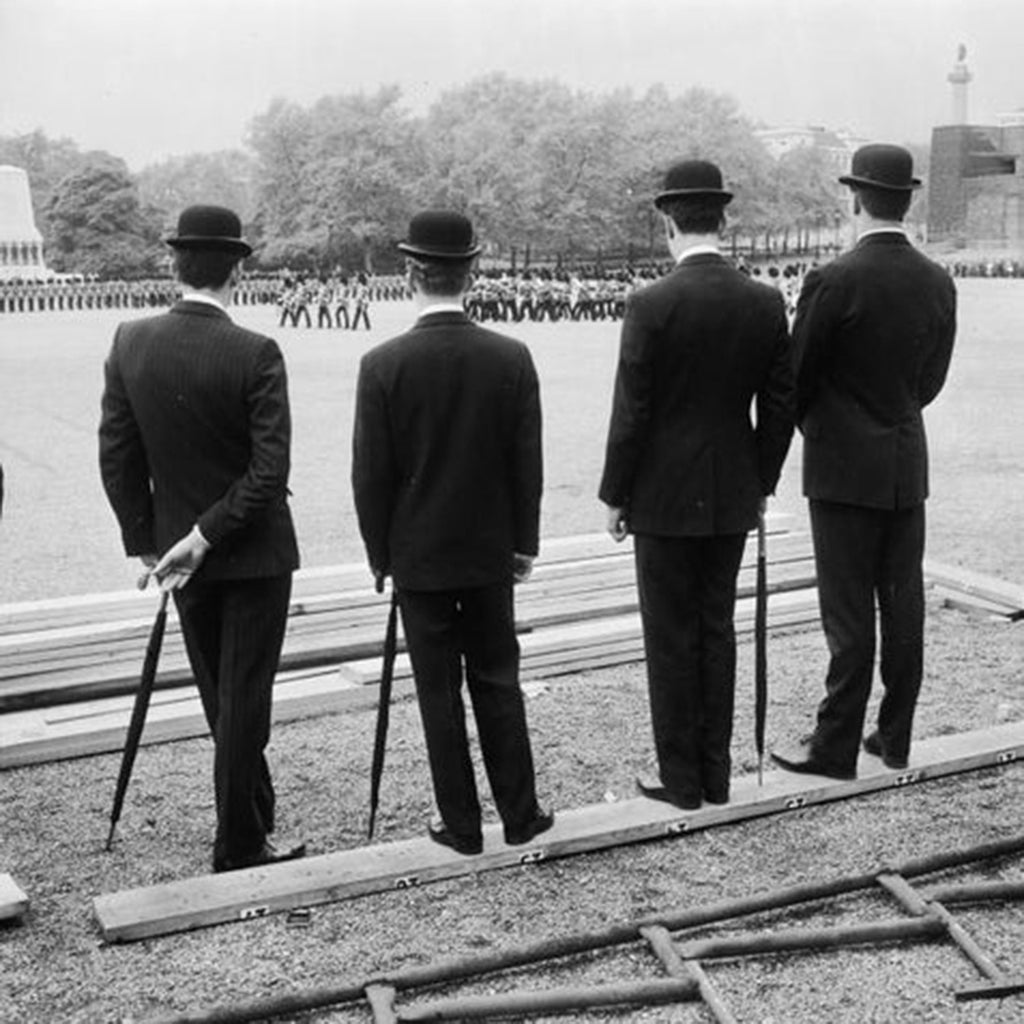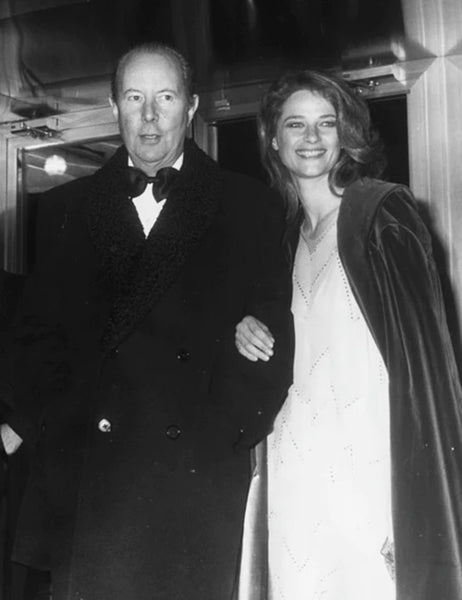During the 1950s, Anthony Sinclair established a bespoke tailoring business in London’s Mayfair district, an area renowned for exclusive shops, hotels, clubs and restaurants.
Although Sinclair did not produce military uniform, his clientele included a number of British Army officers who called upon him to craft their civilian attire (mufti). They favoured slim, cavalry-cut trousers, paired with a single-breasted coat with a soft, natural shoulder.

Off-duty Guards officers in their civilian attire (Mufti)
The coat was cut for ease of movement, with a degree of chest drape and generous sleeves topped with signature roping. The waist was nipped, ensuring that the buttoned-up coat remained close and neat, and the flared skirt over the hips balanced the shape (styling cues undoubtedly taken from the hacking jacket – a garment more than familiar to Sinclair’s sporting gentlemen).
The hourglass shape created by Anthony Sinclair suited the athletic physiques of the military men. It was a style distinctly at odds with the boxy, double-breasted suits popular at the time, and became fondly referred to as the “Conduit Cut”, after Sinclair’s Mayfair premises at 29 Conduit Street.

The Anthony Sinclair Conduit Cut Suit
Whilst the Conduit Cut has evolved subtly over time, it retains the key elements of style and function that set Anthony Sinclair’s tailoring apart from that of his peers a half-century ago. It is a classic design, best formed from plain or subtle patterns of worsted, mohair or flannel cloth, so embracing Sinclair’s clear and simple philosophy of presenting a well-dressed man.
One of Sinclair’s British Army clients was Irish Guards officer, Terence Young, who went onto a career in the film industry, famously directing the first ever Bond film, Dr. No.
The son of a Police Commissioner of the Shanghai Municipal Police, Young was born in China and educated at public school; then, just like the fictional James Bond, he read Oriental History at St. Catherine’s College, Cambridge.

Terence Young with English actress Charlotte Rampling
To many, Terence Young WAS James Bond. There is little doubt that he fitted the character’s profile perfectly – the erudite, sophisticated lady-killer, dressed in bespoke finery, always witty, well-versed in all matters of style and taste … a well-travelled man of the world. He was the perfect man to prepare unknown Scottish actor Sean Connery for the leading role in Dr. No.
Author Robert Cotton outlined the story:
When Connery arrived, far before filming began, Young saw his best opportunity to mould the actor to his own image. As Lois Maxwell related in one of Connery’s many biographies, “Terence took Sean under his wing. He took him to dinner, showed him how to walk, how to talk, even how to eat.” Some cast members remarked that Connery was simply doing a Terence Young impression, but Young and Connery knew they were on the right track. Then, late in pre-production, when Connery was almost ready to make his debut, Young took Connery on a lunchtime trip into London, to his own tailor, Anthony Sinclair. It was time for Connery to “put on the suit” as it were. It was time for Connery to become James Bond.

Connery becomes James Bond